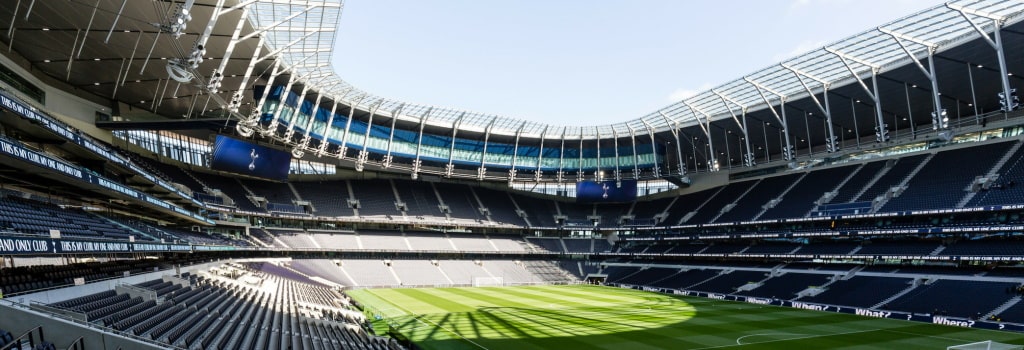

Football stadiums have long been more than just venues for sporting events. They are cathedrals of passion, landmarks of cities, and often, symbols of national pride. The evolution of football stadium architecture tells a fascinating story of innovation, culture, and the ever-growing love for the beautiful game. While fans await matches and discuss strategies, some also look for opportunities to engage more with the sport. For instance, exploring various online betting promotions such as betfred sign up offer to enhance their match-day experience.
The earliest football stadiums were simple grounds, often with terraced stands made of wood. These venues were basic, focusing on accommodating as many spectators as possible. Safety and comfort were secondary concerns. Iconic stadiums like England's Bramall Lane and Scotland's Hampden Park began their journeys during this era. They were not just venues for football but multi-sport arenas, hosting cricket, rugby, and even cycling.
Post World War II, there was a shift towards more durable materials. Concrete became the primary building material, leading to the construction of larger, more enduring stadiums. These stadiums, such as the Maracana in Brazil, could house vast numbers of fans, sometimes exceeding 100,000. The focus was still on capacity but with a touch more permanence and resilience.
The late 20th century witnessed several tragic incidents in stadiums, most notably the Hillsborough disaster in 1989. These tragedies led to a significant shift in stadium design philosophy. Safety became paramount. The Taylor Report, published in the wake of Hillsborough, recommended the removal of perimeter fencing and the introduction of all-seater stadiums in the UK. This change marked the end of terraces and the beginning of more comfortable seating arrangements.
Today's stadiums are marvels of modern architecture and engineering. They are multi-purpose venues equipped with the latest technology. Retractable roofs, like in the Tottenham Hotspur Stadium, ensure games continue regardless of weather.
Advanced lighting systems, colossal LED screens, and Wi-Fi connectivity enhance the fan experience. The Allianz Arena in Munich, with its illuminating facade, stands as a testament to the blend of functionality and aesthetics in contemporary stadium design.
As the global emphasis on environmental conservation intensifies, the world of football isn't left behind. The next significant leap in stadium evolution is geared towards sustainability. This shift isn't a trend but a necessity, addressing the pressing challenges of climate change and resource depletion.
From recycled steel and concrete to sustainably sourced wood, the materials used in stadium construction are changing. These materials not only reduce the carbon footprint but also ensure longer-lasting structures with minimal environmental impact.
Rainwater harvesting systems are another innovation being integrated into stadium designs. By collecting and storing rainwater, stadiums can use it for pitch irrigation, toilet flushing, and other non-potable purposes. This not only conserves water but also reduces the stadium's reliance on municipal water supplies.
Solar panels, once a rarity, are now becoming a standard feature in many new stadium designs. By harnessing the power of the sun, stadiums can generate a significant portion of their electricity needs. This not only reduces operational costs but also diminishes the stadium's carbon emissions.
One of the most ambitious projects underscoring this green shift is the Forest Green Rovers' proposed stadium. Located in England, it's poised to be the world's first all-wooden football stadium. Beyond its unique construction, the stadium will also feature electric vehicle charging points, wildlife habitats, and even an organic pitch, free from pesticides and herbicides. This project doesn't just emphasize the importance of environmental considerations; it sets a benchmark for future stadium projects worldwide.
Incorporating these sustainable features is not just about being environmentally responsible. It's also about future-proofing these venues. As resources become scarcer and environmental regulations stricter, stadiums built with sustainability in mind will be better positioned to adapt and thrive in the coming decades.
Tony Incenzo has been to over 2,000 football grounds - is he the world's barmiest football fan? Read about his love for Non-League football and groundhopping obsession, including watching a match in prison!
An in-depth look at the biggest football attendances ever recorded, from the 1950 World Cup to pre-season friendlies in the States and the Scottish ground with dozens of 100,000+ attendances
My daughter's first ever football match - Orlando City v Atlanta United, August 2019. Written for Izzy to read when she gets old enough. Vamos Orlando
All good things have to come to an end, and the same unfortunately has to be said for football stadiums too. This article looks at the grounds which are soon to host their last match, the stadiums whose days are numbered and where fans will be watching their football from next.
